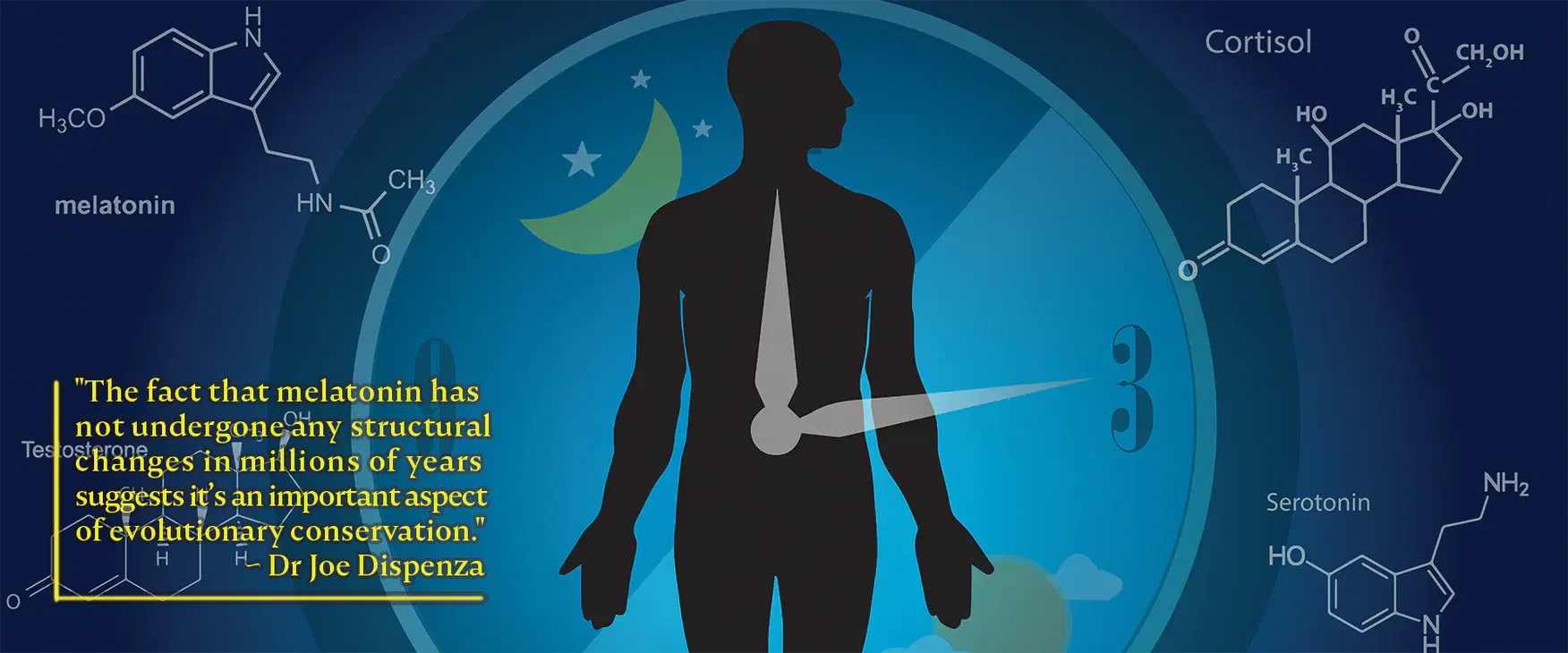The Miracle Molecule Known as Melatonin
Dr Joe Dispenza | 05 November 2021
One of the most important facets of meditation is that it gives us a chance to slow down, pause, and disconnect from the outer world. By closing down our sensory inputs from our external environments, it allows us to forget about the habituations, drives, and emotional conditioning of our body, as well as our perception of time (living in the familiar past and/or the predictable future). If you are trying to overcome an aspect of yourself, rewrite a program, create something new in your future, change your health, and/or connect to new energy and information in order to create from the quantum field instead of matter, arguably the best way to do that is by finding the present moment through meditation.
But if we were to take the idea of meditation into the physiological, chemical, and biological realms, what’s important to realize is that when people close their eyes, they are diminishing the amount of light that their optic nerve receives. This is noteworthy because when incoming light is inhibited, the pineal gland—a major regulator of circadian biology—turns serotonin into melatonin.
So what is melatonin and why is it important?
Melatonin is an “ancient” molecule that is produced via a series of enzymes that synthesize the amino acid tryptophan into serotonin—the daytime neurotransmitter. The fact that melatonin has not undergone any structural changes in millions of years suggests that it’s an important aspect of evolutionary conservation. This idea has been reinforced by the fact that some of the latest research suggests that its importance includes stopping cortisol oversecretion in response to stress, improving metabolic function, lowering triglyceride levels, strengthening the immune system response, increasing REM sleep, producing a host of antioxidant properties linked to anti-aging, and promoting DNA repair and replication, to name but a few of its functions.
Because melatonin is so important, my research team and I were curious to see if there were differences in melatonin levels between control groups, novice meditators, and experienced meditators. Thus, at our Week Long Advanced Retreats, we began measuring melatonin in the blood plasma of these three groups before, then after, a week’s worth of meditation.
What we found was that experienced meditators had higher melatonin levels at the start of the weeklong workshops compared to control and novice subjects. This same group of advanced meditators also went on to significantly increase their circulating melatonin levels after the Week Long Advanced Retreats. In addition, experienced meditators who had very low levels of melatonin before the workshop had a dramatic increase in levels (overall percentage) at the end of the workshop.
What the data suggests is that experienced meditators have a much more dynamic and significantly greater regulatory capability to alter melatonin levels in their blood. Translated into more simplistic terms, this means that if someone’s melatonin levels are higher, their stress levels are lower. As a result, they are in a state of growth, repair, and health—instead of the state of alarm and emergency that comes from living in stress and survival.
What this demonstrates is that there seems to be a direct correlation between serotonin and melatonin, that being—the more melatonin you have, the more serotonin you should have. This is significant because when you produce more serotonin, through a series of cascading biological events, one’s mood, mental state, digestion, sleep, bone density, sexual function, and more improve—all the way up to and including better brain health. In other words, when serotonin and melatonin levels are flourishing, you’re more than likely thriving in your life.
What my team and I have discovered is that, when we train people to create coherent brain wave patterns, and when they learn to tune into and interact with frequencies that carry different information—information that is not coming through their senses via interactions with their external environment, i.e. the normalized frequency of visible light—the pineal gland can transduce those faster frequencies that exist beyond the speed of light (that’s quantum) into transcendental experiences. Throughout this process, melatonin acts as the raw material to produce derivatives called metabolites, which my research team will begin studying at our upcoming workshops.
It’s our theory that these metabolites of melatonin are upgraded versions of melatonin. As we already know, melatonin causes you to:
- Dream, but now it enhances the experience to lucid dreaming.
- Relax, but now a sister molecule is produced from melatonin that really causes you to relax, thus bringing the conditioned body out of stress and survival.
- Sleep more soundly, but now your pineal gland alters the body’s metabolism by producing chemicals that mimic the hibernation process, meaning—it stops the body’s natural drives, such as sex, appetite, and a persistent preoccupation with the outer environment.
Finally, it’s our hypothesis that the very high amplitudes of energy that we have been consistently recording in our brain research might be correlated with another derivative that is found in electric eels. The high amplification of both nervous systems may answer the question of what causes these extremely high gamma brain wave patterns.
So the next time you sit down to meditate, just remember—all of the amazing benefits of this little miracle molecule are probably happening to you.

Comments